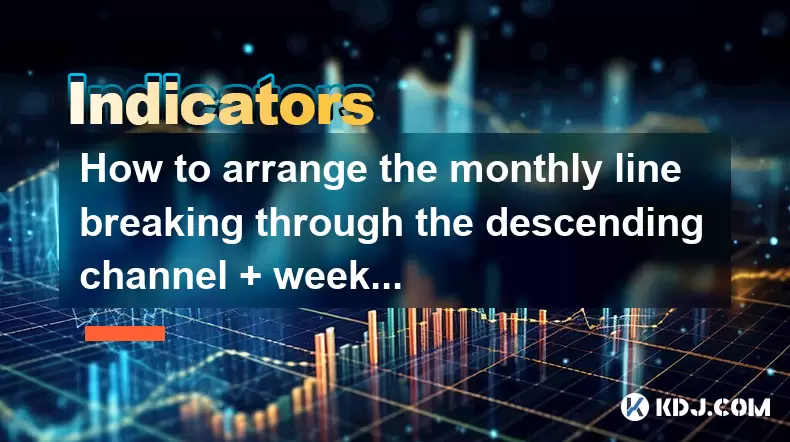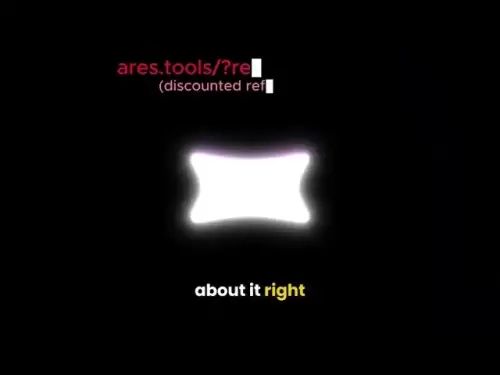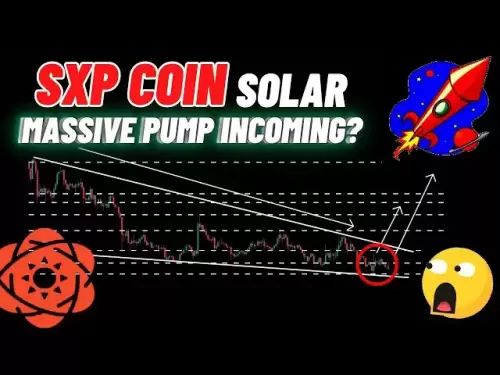-
 Bitcoin
Bitcoin $117500
2.04% -
 Ethereum
Ethereum $3759
3.02% -
 XRP
XRP $3.171
3.30% -
 Tether USDt
Tether USDt $1.000
0.03% -
 BNB
BNB $782.4
2.52% -
 Solana
Solana $187.2
5.62% -
 USDC
USDC $0.0000
0.02% -
 Dogecoin
Dogecoin $0.2380
5.26% -
 TRON
TRON $0.3175
1.07% -
 Cardano
Cardano $0.8227
4.03% -
 Hyperliquid
Hyperliquid $44.50
5.44% -
 Sui
Sui $4.020
10.07% -
 Stellar
Stellar $0.4396
6.28% -
 Chainlink
Chainlink $18.32
4.55% -
 Hedera
Hedera $0.2628
10.71% -
 Bitcoin Cash
Bitcoin Cash $554.8
4.90% -
 Avalanche
Avalanche $24.20
4.60% -
 Litecoin
Litecoin $113.7
2.31% -
 Shiba Inu
Shiba Inu $0.00001413
5.99% -
 UNUS SED LEO
UNUS SED LEO $8.984
0.11% -
 Toncoin
Toncoin $3.326
7.22% -
 Ethena USDe
Ethena USDe $1.001
0.00% -
 Uniswap
Uniswap $10.49
4.56% -
 Polkadot
Polkadot $4.092
4.02% -
 Monero
Monero $326.6
1.30% -
 Dai
Dai $1.000
-0.01% -
 Bitget Token
Bitget Token $4.570
2.49% -
 Pepe
Pepe $0.00001267
5.10% -
 Aave
Aave $297.3
3.10% -
 Cronos
Cronos $0.1344
4.10%
How to arrange the monthly line breaking through the descending channel + weekly MACD bottom divergence + daily line volume Yang Baoyin?
A monthly breakout above a descending channel, confirmed by weekly MACD bottom divergence and a high-volume daily Yang Baoyin, signals a high-probability bullish reversal.
Jul 25, 2025 at 05:08 am

Understanding the Descending Channel on the Monthly Chart
When analyzing monthly chart patterns, identifying a descending channel is crucial for long-term trend prediction. A descending channel forms when price action creates lower highs and lower lows, confined between two parallel downward-sloping trendlines. The upper boundary connects the swing highs, while the lower boundary links the swing lows. Traders watch for a breakout above the upper trendline as a potential reversal signal. For a valid breakout, the price must close decisively above the upper channel line, preferably accompanied by increased volume. Confirmation is essential—wait for at least one full monthly candle to close beyond the resistance. This avoids false breakouts caused by volatility or short-term spikes. The monthly timeframe provides strong reliability due to its reduced noise and emphasis on macro trends. Once the breakout occurs, it often signals the start of a new bullish phase, especially if supported by other timeframes.
Interpreting Weekly MACD Bottom Divergence
The MACD (Moving Average Convergence Divergence) indicator on the weekly chart plays a vital role in detecting momentum shifts. A bottom divergence occurs when the price makes a new low, but the MACD histogram or signal line fails to reach a new low, instead forming a higher low. This indicates weakening bearish momentum and potential reversal. To spot this setup:
- Ensure the price creates two consecutive lower lows.
- Observe the MACD: the second trough should be higher than the first, even if the price is lower.
- Confirm the histogram bars are shrinking in height during the second dip.
- Wait for the MACD line to cross above the signal line for added validation.
This divergence suggests that selling pressure is diminishing. When combined with a monthly breakout, it strengthens the case for a sustained upward move. Traders should monitor the MACD crossover closely, as a bullish cross on the weekly chart can act as a trigger for entering long positions. Avoid acting on divergence alone—always align it with structural breakout confirmation.
Analyzing Daily Chart Volume and Yang Baoyin Pattern
The daily chart provides tactical entry signals when aligned with higher timeframe setups. The term Yang Baoyin comes from Japanese candlestick terminology, known in English as a Bullish Engulfing Pattern. This pattern consists of two candles:
- The first is a red (bearish) candle, indicating selling pressure.
- The second is a larger green (bullish) candle that completely engulfs the body of the previous candle.
For a valid Yang Baoyin, the green candle’s body must cover the entire body of the prior red candle—not just the wicks. This shows a sudden shift from selling to buying dominance. When this pattern appears on the daily chart, especially after a prolonged downtrend, it signals strong reversal potential. Volume confirmation is critical:
- The green candle should exhibit significantly higher volume than recent average trading volume.
- Rising volume on the engulfing candle confirms institutional or large trader participation.
- Compare volume to the past 10–20 days; a spike above the 80th percentile is ideal.
This combination of pattern and volume increases the probability of a successful breakout continuation.
Aligning Monthly, Weekly, and Daily Signals
For high-probability trades, synchronization across timeframes is essential. When the monthly line breaks the descending channel, it sets the macro stage. This must coincide with weekly MACD bottom divergence, which confirms weakening bearish momentum. On the daily chart, the emergence of a Yang Baoyin pattern with strong volume acts as the entry trigger. To execute this alignment:
- Monitor the monthly chart for a confirmed close above the descending channel’s upper boundary.
- Check the weekly MACD for divergence and a bullish crossover.
- Scan the daily chart for a Bullish Engulfing (Yang Baoyin) candle with volume surge.
- Ensure no major resistance zones (like historical price clusters or Fibonacci levels) block upward movement immediately.
Entry can be taken at the close of the daily Yang Baoyin candle or on the next open. Position size should reflect the strength of confluence—more signals mean higher confidence. Stop-loss placement is typically below the low of the engulfing candle or the recent swing low on the daily chart.
Step-by-Step Execution of the Strategy
To implement this multi-timeframe strategy effectively:
- Identify the descending channel on the monthly chart using drawing tools. Connect at least two significant swing highs and two swing lows.
- Wait for a monthly close above the upper trendline. Do not act on intramonth spikes.
- Switch to the weekly chart and plot MACD (12, 26, 9). Look for price making a lower low while MACD forms a higher low.
- Confirm MACD crossover: the MACD line (blue) crosses above the signal line (red).
- Move to the daily chart and search for a Bullish Engulfing candle.
- Verify volume: use a volume oscillator or compare bar height to past 20 days.
- Place entry order after the daily candle closes, ensuring all conditions are met.
- Set stop-loss below the engulfing candle’s low or the recent structure low.
- Use volume profile to identify potential resistance zones for partial profit-taking.
This method avoids emotional trading by relying on objective, rule-based criteria across multiple timeframes.
Frequently Asked Questions
What if the monthly breakout candle has low volume?
A breakout with low volume raises suspicion about its validity. Even if the price closes above the descending channel, lack of volume suggests limited participation. In such cases, wait for a retest of the breakout level with strong volume before entering. A follow-up weekly or daily candle with high volume can confirm institutional acceptance.
Can Yang Baoyin appear at the top of an uptrend?
Yes, but in that context, it’s not called Yang Baoyin. The Bullish Engulfing pattern is only meaningful after a downtrend. If it appears during an uptrend, it may just be continuation, not reversal. Always assess the broader trend—Yang Baoyin is a reversal signal, not a trend-following one.
How do I adjust the MACD settings for better divergence detection?
The standard (12, 26, 9) works well, but some traders use (24, 52, 9) on weekly charts for smoother signals. Smoothing reduces noise but may delay crossovers. Test different settings in backtesting, but avoid over-optimization. Stick to widely accepted parameters to maintain consistency.
Is it necessary for all three conditions to occur simultaneously?
Yes. The power of this strategy lies in confluence. A monthly breakout without weekly divergence may lack momentum support. A Yang Baoyin without volume confirmation could be a trap. All three elements—monthly structure break, weekly momentum shift, and daily reversal signal with volume—must align to reduce false signals and increase reliability.
Disclaimer:info@kdj.com
The information provided is not trading advice. kdj.com does not assume any responsibility for any investments made based on the information provided in this article. Cryptocurrencies are highly volatile and it is highly recommended that you invest with caution after thorough research!
If you believe that the content used on this website infringes your copyright, please contact us immediately (info@kdj.com) and we will delete it promptly.
- Pi Coin, Wallet Features, and Coinbase: What's the Buzz?
- 2025-07-26 18:30:12
- Worldcoin, Punisher Coin, and the Meme Coin Mania: What's the Haps?
- 2025-07-26 18:30:12
- Conviction, Justice System, and Murders: A Look at Recent Cases and Shifting Perspectives
- 2025-07-26 18:50:11
- Shiba Inu, Remittix, and the Market Surge: What's the Hype?
- 2025-07-26 19:10:12
- Cardano Price, ADA Holders, and Leadership Criticism: What's the Real Deal?
- 2025-07-26 19:30:12
- MicroStrategy, Bitcoin, and XRP Whale Dumps: What's the Deal?
- 2025-07-26 19:30:12
Related knowledge

What does it mean that the rebound is blocked after the moving average is arranged in a short position for the first time?
Jul 26,2025 at 10:51am
Understanding the Short-Term Moving Average ConfigurationWhen traders refer to a 'short position arrangement' in moving averages, they are describing ...

What does it mean that the parabolic indicator and the price break through the previous high at the same time?
Jul 26,2025 at 07:22pm
Understanding the Parabolic Indicator (SAR)The Parabolic SAR (Stop and Reverse) is a technical analysis tool developed by J. Welles Wilder to identify...

What does it mean when the price rises along the 5-day moving average for five consecutive days?
Jul 26,2025 at 08:07am
Understanding the 5-Day Moving Average in Cryptocurrency TradingThe 5-day moving average (5DMA) is a widely used technical indicator in cryptocurrency...

What does it mean when ADX breaks through 25 and +DI continues to rise?
Jul 26,2025 at 07:00pm
Understanding the ADX Indicator and Its ThresholdsThe Average Directional Index (ADX) is a technical analysis tool used to measure the strength of a t...

What does it mean when the price breaks through the 60-day moving average with a large volume but shrinks the next day?
Jul 26,2025 at 06:01am
Understanding the 60-Day Moving Average in Cryptocurrency TradingThe 60-day moving average (60DMA) is a widely used technical indicator in the cryptoc...

What does the sudden rise of ADX in DMI accompanied by +DI crossing -DI indicate?
Jul 26,2025 at 01:21pm
Understanding the DMI and Its Core ComponentsThe Directional Movement Index (DMI) is a technical analysis tool used to determine the presence and stre...

What does it mean that the rebound is blocked after the moving average is arranged in a short position for the first time?
Jul 26,2025 at 10:51am
Understanding the Short-Term Moving Average ConfigurationWhen traders refer to a 'short position arrangement' in moving averages, they are describing ...

What does it mean that the parabolic indicator and the price break through the previous high at the same time?
Jul 26,2025 at 07:22pm
Understanding the Parabolic Indicator (SAR)The Parabolic SAR (Stop and Reverse) is a technical analysis tool developed by J. Welles Wilder to identify...

What does it mean when the price rises along the 5-day moving average for five consecutive days?
Jul 26,2025 at 08:07am
Understanding the 5-Day Moving Average in Cryptocurrency TradingThe 5-day moving average (5DMA) is a widely used technical indicator in cryptocurrency...

What does it mean when ADX breaks through 25 and +DI continues to rise?
Jul 26,2025 at 07:00pm
Understanding the ADX Indicator and Its ThresholdsThe Average Directional Index (ADX) is a technical analysis tool used to measure the strength of a t...

What does it mean when the price breaks through the 60-day moving average with a large volume but shrinks the next day?
Jul 26,2025 at 06:01am
Understanding the 60-Day Moving Average in Cryptocurrency TradingThe 60-day moving average (60DMA) is a widely used technical indicator in the cryptoc...

What does the sudden rise of ADX in DMI accompanied by +DI crossing -DI indicate?
Jul 26,2025 at 01:21pm
Understanding the DMI and Its Core ComponentsThe Directional Movement Index (DMI) is a technical analysis tool used to determine the presence and stre...
See all articles

























































































